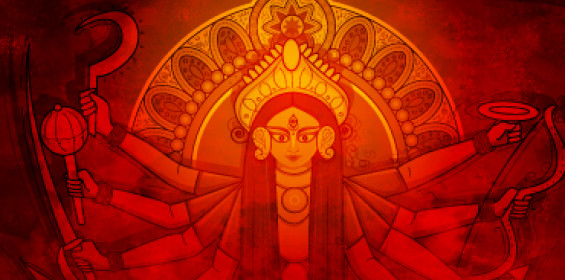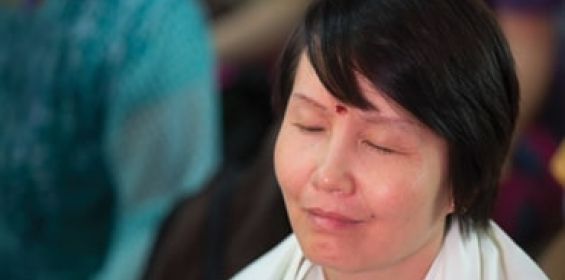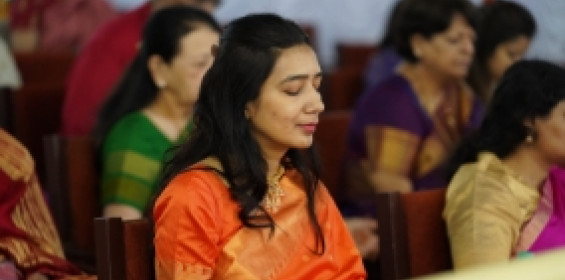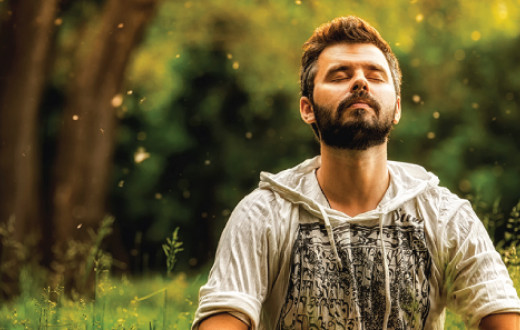Hasitam madhuram, hridayam madhuram, gamanam madhuram, madhura di pate rakkhilam madhuram
(His smile is sweet, his heart is sweet, his gait is sweet, everything is sweet about the lord of sweetness)
These are the lines from one of the most famous proses sung about Lord Krishna, compiled in the form of Madhurashtakam. This devotional composition was written by Shri Vallabhacharya, the Telugu philosopher who founded the Pushti sect in the Braj region of India. On the 541st birth anniversary of Shri Vallabhacharya, let’s know more about the philosopher who popularized the belief that even householders could achieve salvation, the kind that was assumed to be only limited to ascetics.
Early life and education
Shri Vallabhacharya or Vallabha was born on the 11th day of the lunar month of Chaitra to Lakshmana Bhatta and Illammagaru. Lakshmana and Illammagaru hailed from Andhra and were from a lineage of Telugu Vaidiki Brahmins. Before the birth of Vallabha, they lived in Prayagraj but India was facing onslaughts from Islamic forces during that time. Fearing conversion and death post the onslaught, Lakshmana and his wife fled when she was seven months pregnant. The stress of escaping the region led to the premature birth of Vallabha, who was named thus as it means 'dear one' in Sanskrit.
Vallabha's education started with the study of four Vedas at the age of seven. Mastering the scriptures early, he also learned other philosophical systems of Jain and Buddhist schools, Nimbarka, Ramanuja, and Adi Shankaracharya. Such was his mastery that Vallabha was given the title of Bal Saraswati at the age of 11 after he impressed the public of Lakshmana Balaji and Vyankateshwar with his knowledge.
Vallabha participated in a debate in the court of King Krishnadevaraya between Vaishnavites and Shaivites on whether the god was dvaita or advaita (dualistic or non-dualistic). The debate ran for 27 days in the center hall, at the end of which Vallabha was declared victorious. He was adorned with the titles of 'Acharya' and 'Jagad guru' and also awarded large vessels of gold. He declined the gold, taking just seven gold coins which were used to prepare the ornaments of deity Vitthalanatha of Pandarpur.
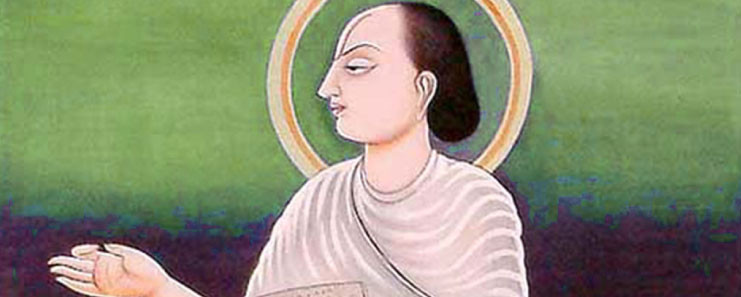
Establishing the Pushtimarg
During his lifetime, Vallabhacharya performed three pilgrimages of India. He was barefoot and just wore a Upavarna (upper cloth) and white dhoti. He gave discourses on the Bhagavata at 84 different places which were later renowned as Chaurasi Baithak. These places are considered holy pilgrimages. Vallabha had a special connection to Braj (present-day Mathura) and he used to stay four months out of the year in that region.
Upon reaching Gokul, Vallabhacharya realized that he wanted to restore people to the devotional path. He meditated on Lord Krishna, his ishtadev (the guiding deity), who appeared to him as a vision as Shrinathji. It was in that meditation that he was bestowed Brahma Sambandha, a mantra of dedicating one’s self to Krishna. The next morning Vallabhacharya initiated Damodardasa (his dearest devotee) to the mantra and he became the first Vaishnavite inculcated on the Pushtimarg.
Pushtimarg, also known as Vallabhacharya Sampradaya, literally meaning the path to grace, was the Vaishnavite subtradition that Vallabha started. Thousands of followers joined him on the path as he preached about the grace of Krishna and initiated the followers with the Brahma Sambandha. The values of the path were based on and derived from the devotional practices centered on the plays of Krishna, found in Shrimad Bhagavatam. Pushtimarg recognized Krishna by many epithets such as Shri Dwarkadishji, Shri Vittalnathji, Shri Madanamohanji, and Shri Nath.
Let’s go deeper into discovering amazing India! This country has a wealth of spiritual and wellness knowledge. Untap some of those secrets and discover your potential with these timeless wisdom nuggets. Know more at The Art of Living Meditation and Breath program.
Discover India's spiritual heritage and learn about the mind & breath. I'd like to know more>>

Teachings of Pushtimarg
Vallabhacharya teachings and the path of Pushtimarg shared ideas with Dvaita Vedanta and Vishishtadvaita. According to these philosophies, Krishna is the source of everything that exists in the universe and it is due to his grace that a soul attains spiritual liberation. Shri Vallabhacharya rejected the ascetic lifestyle, wherein he preached that even the householders can attain liberation by devoting themselves to Krishna. They live their life on the belief that their daily life is a play of Krishna or a rasalila (divine play) of Krishna’s creation. In Pushtimarg, the followers and devotees see themselves as companions of Krishna, participating in the everyday Rasa, devoting their lives to him.
The followers of Pushtimarg, called pushtimargis, are based in North and Western states of India, mostly centered around Rajasthan, Gujarat, and Madhya Pradesh. The main shrine of pushtimargis is Shrinath temple in Nathdwara. The town is located just north of Udaipur and its origins are traced to 1669, a time when the followers lived in fear of Aurangzeb.
Shri Vallabhacharya wrote several commentaries on Shreemad Bhagwatam and Brahma-sutras. And, to help his followers on their path of devotion, he wrote 16 verses which were called Shodasha Granthas. These verses speak about increasing one’s love for Krishna through service and remembrance (Seva and Smarana).
Shri Vallabhacharya was one of the first proponents of the Bhakti movement, bringing devotional aspects to the daily lives of householders. His teachings and commentaries not only brought faith and devotion to the lives of thousands but also made them feel that their life is a play. This belief helped them to live a life free from stress and anxiety, with the belief that they all are companions of Lord Krishna.
The world today brings with its multitude of issues and happenings that cause us a lot of anxiety and stress. Just like the teachings of Shri Vallabhacharya, Happiness course is a potent way with which you can be free of the stress and struggles of daily life. The techniques taught in the course can help you live a relaxed life, with high levels of joy and productivity.
The material has been sourced from @bharathgyan. This research team, led by a passionate husband-wife duo - Dr. DK Hari and Dr. Hema Hari, unearth some of India’s untold stories and make them contemporary. You can click here to buy any of their books on Indian civilization.
We’d love to hear from you
Leave your comments @artofliving

